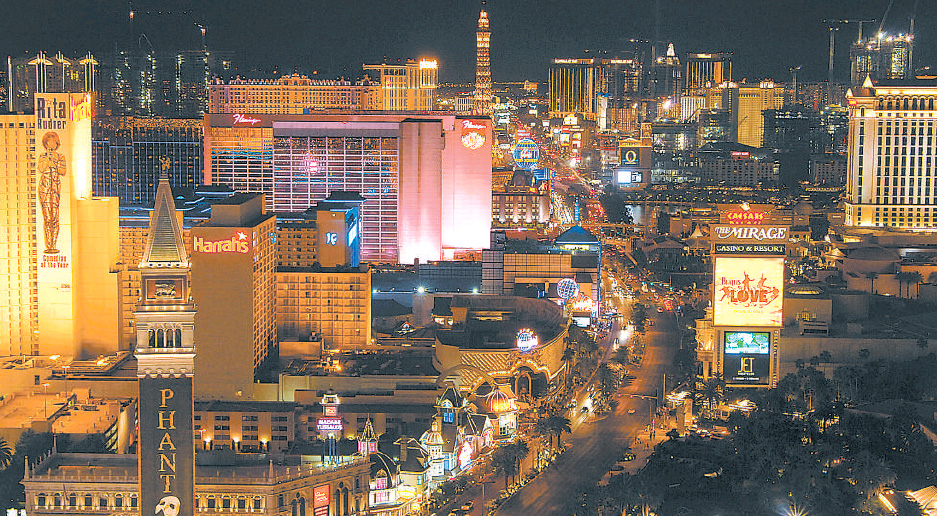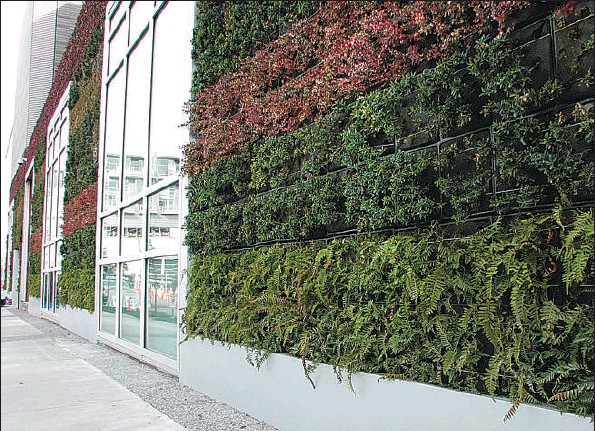Four great locales to sample in the U.S. Southwest
Barbara Braidwood and Rick Cropp
Province

Las Vegas, not surprisingly, is home to the Neon Museum, the Liberace Museum and the Pinball Hall of Fame – along with some of the best free entertainment around.
Enough rain, wind and snow. Pack away that heavy coat and hat. What you need is sunshine and blue skies in the warm dry desert air where everyone but a curmudgeon will find true happiness.
Will it be the invigorating glitz of Las Vegas, the panoply of world class activities in Phoenix or the mellower pace of desert mountain cities of Palm Springs and Palm Desert?
Las Vegas
You know about the gambling, world-class shows and noshing. But here’s a highlight you may not know about: Las Vegas (www.visitlasvegas.com) boasts the world’s largest chocolate fountain (Guinness World Records says so) spanning nine metres from ceiling to floor.
It’s at the Jean-Philippe Patisserie (www.jpchocolates.com) at the Bellagio Hotel & Casino and circulates 950-kilograms of chocolate at a rate of 115 litres per minute.
We certainly don’t tend to think of museums in Las Vegas, but there are some unusual ones that are worth a gander. Pack your pockets with coins for the Pinball Hall of Fame (www.pinballmuseum.org) so you can try your hand at being a pinball wizard.
The Atomic Testing Museum (www.atomictestingmuseum.org) relates the beginning of the atomic age when dozens of bombs were tested nearby.
Meanwhile, the Neon Museum, (www.neonmuseum.org) preserves the area’s neon signs. The boneyard tours will show you some fantastic examples of the craft.
And then there’s Liberace Museum & Foundation (www.liberace.org). Need we say more?
If you love to haggle, this could be your best time to visit Las Vegas. Grab coupon booklets or attraction flyers at the airport or at your hotel. After you pick what you want, perhaps a helicopter flight for lunch at the bottom of the Grand Canyon with a finishing flourish of a low altitude flyover of the strip (already slashed from $390 US to $287 US in an ad we saw), call and ask if there is a better rate. Ask about any standby discounts or mid week or even weekend discounts.
Hotel rooms are as cheap as $30 US and ask for any complementary incentives. For instance, the Venetian has a credit for shows, gaming or the spa while several other hotels have restaurant or cabana credits.
Pop into a pawnshop. Right now they have the largest stock of luxury items ever.
Walking the strip, gazing at the incomparable architecture and peeking into the interiors of the hotels, is some of the best free entertainment around.
Don’t miss the evening version of water, music and light at the Fountains of Bellagio (every 15 minutes). We think it’s still the best free show in town.
PHOENIX
Yes, you can golf, shop or watch professional sports until you can’t stuff in another hotdog or hit the culture trail of art galleries and theatres until your eyeballs hang on your sunburned cheeks.
But a different view of Phoenix (www.visitphoenix.com) comes from the air, the fringes of the city or even from underground.
When you need a break from all the good food, sports and golf, take a balloon ride, dig up a little history, drive out, way out, into the desert or climb a mountain.
Phoenix really did rise from the remains of another civilization, and traces of the 3,000-year-old Hohokam people — who disappeared around 1500 — remain. Beneath the downtown Phoenix Convention Center are the remains of about 40 Hohokam pit houses (www.phoenix.gov/ PUEBLO/museum.html) and hundreds of items recovered during the construction are on display.
Afterwards, go to the nearby Phoenix Museum of History (www.pmoh.org) for a view of the city’s history up to the present day. Unlike Canada, where trees and brush so often obscure your view, with any elevation at all in Phoenix you can see for miles.
The city has mountains on two sides and a hump in the middle called Camelback Mountain. Camelback’s sheer red sandstone cliffs can be circumvented or challenged with trails to the top (350 metres above the desert), where there is a spectacular outlook. The easy trails at the bottom are a stroll for anyone with a good pair of walking shoes, but the top is a bit of a struggle.
Mountains at the edges of the city are higher and offer much more diversity, from really easy to death-defying trails. The North Mountain Visitor Center has exhibits illustrating the Sonoran Desert‘s richness as well as maps of hiking trails snaking around the more-than-600-metre mount.
Ballooning provides a little easier way for the whole family to attain nearly the same altitude. Arizona Ballooning (www.arizonaballooning.com/Maps/maps.htm) and Hot Air Expeditions (www.hotairexpeditions.com/general.htm) can take you up for a bird’s eye view.
PALM SPRINGS
AND PALM DESERT
The valley that holds Palm Springs and Palm Desert (www.VisitPalmSprings.com or www.palmspringsusa.com) and other small towns is surrounded by wilderness desert with hundreds of visible trails meandering up the hills and mountains. It may seem impossible to get lost if you stroll close to the valley bottom, but take care if you are going to tackle the snow capped peaks. Some soar to more than 3,500 metres and as soon as you enter the forest, landmarks disappear.
Another way to see the desert with a bit more range is to take a tour with Desert Adventures (www.red-jeep.com). Their trademark red jeeps offer tours of the San Andreas Fault and nearby Joshua Tree National Park and their adventure drivers will regal you with tales of Native American history and culture, old mining lore, ethno-botany, geology and the tours will bestow panoramic vistas.
We loved the Living Desert Zoo and Gardens (1-760-346-5694; www.livingdesert.org). There is a trolley system to take you through the nearly 5,000 hectares, but walking over a crest to find the head of a giraffe poking above the trees is a thrill you won’t want to hurry through. Some of these animals, living in gargantuan cages among the cactus and cliffs, are the last of their species.
Palm Springs has long been a playground for millionaires and movie stars. The valley has pockets of ritzy shopping and art galleries, but for our money the best shopping is in the second-hand shops. Whether it is restless décor syndrome or funky furniture fads or ancient movie stars leaving entire estates to be liquidated, Palm Springs has some of the most unusual second-hand goods anywhere.
One-of-a-kind, custom-made doodads and clothes are even more bizarre or fashionable depending on your predilections. The store Modern Way (1-760-320-5455, http://www. psmodernway.com/page6a.html), has some good examples.
On Saturday and Sunday mornings the College of the Desert Street Fair (1-760-776-0152; www.codstreetfair.com) is filled with such items as hand-tooled belts, feathered sun hats, soaps, jewellery, food, handbags, paintings, metal work and semiprecious stones. Go early. By 11 a.m., the place is jammed. (If the parking lineup is long, leave your car across the road from the college in the residential area.)
Thursday evening, make your way to Villagefest (1-760-320-3781, www.villagefest.org), an open-air market on Palm Canyon Drive (between Amado and Baristo Streets). The road closes to car traffic and vendors set up booths with arts and crafts and food. Wander around and then plant yourself for some unmatched people watching.
Barbara Braidwood and Rick Cropp (RickandBarbara@telus. net) are Vancouver based writers.
© Copyright (c) The Province










